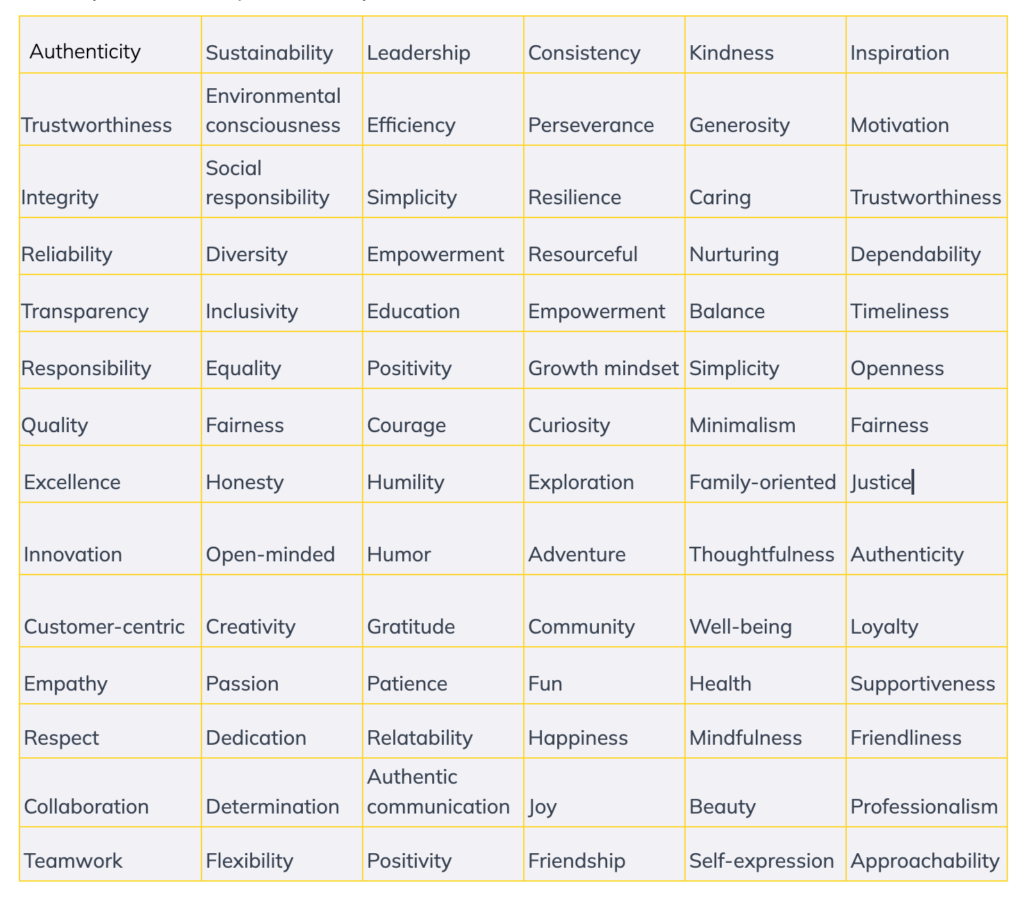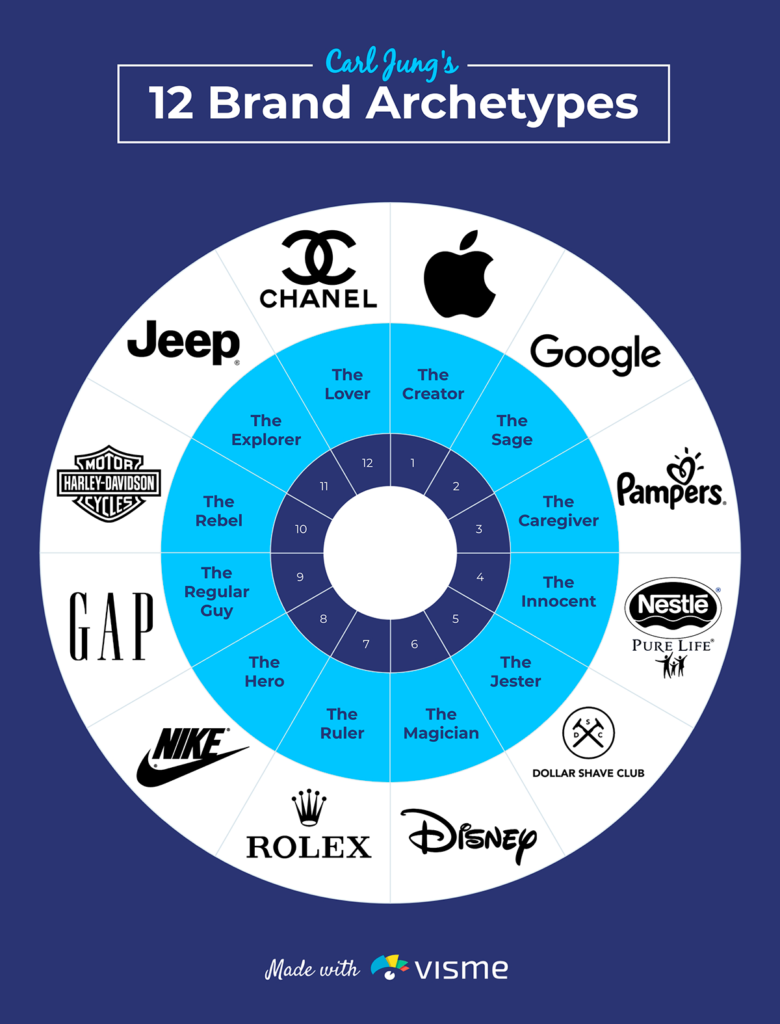There’s a mistaken belief that brand strategy is something you only need later in business when you have everything figured out, are more established, and are clear about your audience and offers.
However, I disagree and think that brand strategy should form the foundation of any startup business. This includes your purpose, vision, mission, values, ideal client, and brand personality.

In fact, according to a recent study, 82% of consumers buy from brands with a greater purpose and mission.
The question is, how can you develop a strong brand strategy that’ll attract customers to your site and offers?
The answer lies in brand strategy workshops and workbooks, which provide invaluable clarity about:
- The direction you want your business to take
- The people you want to help
- And the boundaries you want to set
Here at Simply Digital Design, we offer an in-depth Brand Strategy Workshop that covers 12 critical areas of brand strategy.
However, clarifying the following aspects of brand strategy for newer businesses will significantly impact starting your business correctly.
1. Your Why/Purpose
Strong brands thrive by understanding their “why,” which is the core values, goals, and mission driving their work.
In other words, your purpose.
In “Start With Why,” Simon Sinek highlights that the most successful leaders and companies communicate their purpose effectively. This clarity attracts clients who resonate with your vision.
In many ways, your purpose is the heart of your brand, helping you guide decisions and shaping your values, voice, and aesthetic.

So, instead of focusing solely on what you want to offer, reflect on why you want to do it.
Ask yourself:
- What’s your Why?
- Why do you want to start or grow this business?
Then, go deeper by asking yourself why you gave your previous answer a few times. This will help you dig deeper than the surface level.
2. Vision
Your vision is the beacon or north star that keeps your passion alive and constantly drives you forward. It’s the vibrant picture of the future you dream to create through your work.
When your vision aligns with your why, it sparks enthusiasm and fuels your motivation daily. You can also use your vision to guide your strategic decisions and attract clients and future team members who share your passion.
Ask yourself:
- What about your Why keeps you excited, fired up, and motivated to push boundaries and achieve your goals?
3. Mission
Reflect on the vision you shared earlier. If your vision is the big dream you’re striving for, then your mission is the roadmap to get there:
- Vision = Dream
- Mission = Plan of action
In other words, your mission outlines the concrete steps and strategies your brand needs to take to turn your vision into reality. It’s about the day-to-day actions and decisions that move your brand forward, bringing you closer to your ultimate goal.

According to the Harvard Business Review, translating your vision into a structured action plan can help your business achieve long-term growth.
Ask yourself:
- How is your brand making progress toward achieving your vision?
Define this journey clearly and purposefully. You can even create your first Mission statement by using this template:
Who you are + What you do + Who it’s for + How it adds value
4. Values
Values are the guiding principles that shape your brand’s identity and actions. They’re the things that truly matter to you. Your values are the foundation of your brand’s culture and decision-making, influencing everything from your interactions to your overall aesthetic.
There are MANY values to choose from, but it all boils down to choosing those that suit your business and what you stand for. Some examples of values include:
- Quality
- Fun
- Approachable
- Trustworthy
- Growth
- Friendship
Write down whatever comes to mind—no right or wrong values exist.
Then, delve deeper into why each value is significant to you. This process clarifies the true meaning behind your values, refining their importance within your brand.
Ask yourself:
- What core values drive your brand’s mission and vision?
When deciding on values, it sometimes helps to look at a Value or Brand Personality Word Matrix. See an example here.

You can also download our abbreviated Brand Site and Launch Guide with a Value Matrix here.
5. Ideal client
Understanding your ideal client is crucial to ensuring every aspect of your business is aligned. It also gives you the best chance to launch successful campaigns and achieve high profits.
By identifying your ideal client, you can adjust your visuals, social media marketing, website, and services to attract those who resonate most with your brand and offers.
Picture the kind of client who allows you to unleash your creativity, value your work, and align with your brand’s ideas.
Ask yourself:
- Who is this person?
- What are their name, lifestyle, and behaviors?
- What drives them?
- What do they value most?
Answering these questions will help attract clients who need your services and enhance your brand’s journey toward achieving its mission and vision.

Crafting this detailed profile will also help you connect with those you want to work with regularly, creating a more pleasurable experience for your business. To dive deeper into defining your ideal client, consider the following:
- Demographics
- Interests
- Challenges
- Goals and desires
6. Brand Personality
Your brand personality is the human characteristics and emotional tone infused into your brand, making it relatable and memorable. It’s what sets you apart and creates a connection with your audience.
Brand archetypes are universal symbols and narratives that reflect fundamental human motivations and values.
They include figures like:
- The “Hero” who embodies courage and determination
- The “Caregiver” who prioritizes empathy and support
- The “Creator” who’s driven by innovation and creativity
- And the “Explorer” who values adventure and discovery

Image Source: https://visme.co/blog/brand-archetypes/
Identifying a brand archetype is particularly helpful for startup businesses as it provides a clear framework for communicating your brand’s personality and values.
This clarity ensures that your brand resonates emotionally with your target audience, promotes a consistent brand identity, and makes you stand out in a crowded marketplace.
Aligning your business with a specific brand archetype allows you to craft compelling stories and messages that attract and engage your ideal clients. This creates a strong, cohesive brand identity right from the start.
Discover your brand’s unique personality with our fun Brand Personality Quiz! It’ll reveal your brand archetype and provide you with a custom color palette and mood board tailored to your brand’s identity.
Create Your Brand Strategy Guide
Establishing these six brand strategy elements for startups—Purpose, Vision, Mission, Values, Ideal Client, and Brand Personality—creates a solid foundation for success.
With these elements in place, you can develop:
- Cohesive brand messaging
- Compelling brand assets
- Targeted offers
- An effective marketing plan
This strategic clarity will help you attract and engage your ideal clients and guide your business decisions, ensuring you achieve consistent growth and stand out in the marketplace.














